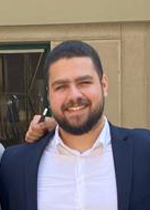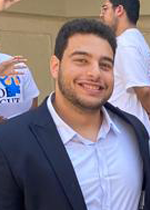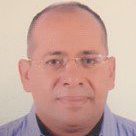Team Members

Hassan sakr
Team Leader

Mohamed baher
Team Member

Ahmed ammar
Team Member

Omar mohamed el sayed
Team Member
Supervisors

Dr. Name
Professor

Eng. Name
Teaching Assistant
Abstract
Rhinoplasty surgery is one of the most common plastic surgeries that are done on a day to day basis. It adds an upgrade to a person’s looks, boosting the person’s self esteem that may have been brought down due to a tragic accident or just a birth defect. Many people that may consider rhinoplasty are afraid of its results. People are afraid of having unnatural or unflattering results. The system is based on taking a picture of the patient’s face as an input, and after the input is processed, it gets exposed to different types of CNN classifier, including the (CNN,AlexNet,ResNet),in order to try and simulate what could be the output by the actual procedure without having to go through it. In the end, the result would be displayed as a 3D model to allow more comprehension from the doctor’s side, and for enhanced representation for the patient.
System Objectives
• The system’s main aim is to give patients a view of what they would expect to see and how would they look like after the surgery is done, with the usage of a 2-D image, as an input, and then shown the output with a 3-D image for better visualization.
• Image processing phase which is done using OpenCV,python library [10]. Image processing divided Nose Detection, Image Enhancement, and Nose Isolation. Nose Detection Allows us to extract the most important feature that we want to focus on. Digital pictures are modified during the process of image enhancement to provide outcomes that are more suited for display or additional image analysis.
• Our neural network for generating images of the nose’s shape after surgery will be based on CNN, Convolutional Neural Networks. In addition to CNN, we will also explore the use of other popular CNN architectures such as AlexNet and ResNet. By experimenting with these different network architectures, we hope to identify which one is best suited for our particular task. This will enable us to produce more accurate and reliable images of the nose’s shape post-surgery, which can aid in the assessment and planning of future surgeries.
• 3d model showing the results of the operation before undergoing it.
System Scope
• 2D to 3D Image conversion: An assessment of the depth map of the original 2D image and then using this depth map to create a 3D stereoscopic image.
• The simulation: Preoperative and postoperative rhinoplasty Simulation using Artificial In-
telligence models. AI predicts the patient facial features of the patient’s face following the operation
• Processing: Allows us to extract the most important feature that we want to focus on. Image enhancement is making adjustments to digital pictures to make them more acceptable for display or additional image analysis.
Documents and Presentations
Proposal
You will find here the documents and presentation for our proposal.
Document
Presentation
SRS
You will find here the documents and presentation for our SRS.
Document
presentation
SDD
You will find here the documents and presentation for our SDD.
Document
presentation
Thesis
You will find here the documents and presentation for our Thesis
Document
Presentation
Accomplishments
Publications
Competitions

Competition Title
type here detailss about your participation in the competition.


